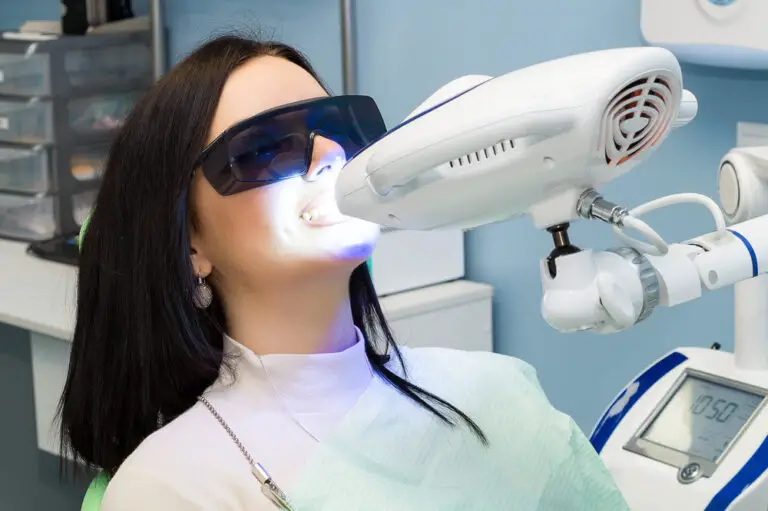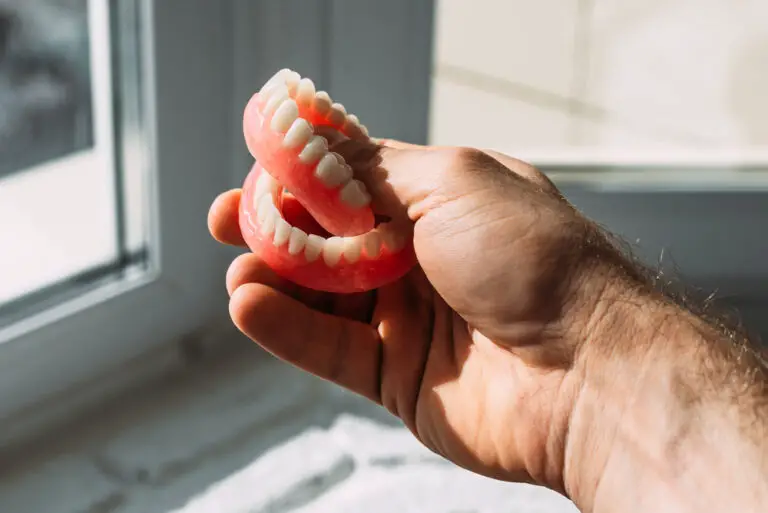Are you missing teeth and waiting for a dental implant? It can be a frustrating and uncomfortable experience, especially if the gap is visible when you smile. Fortunately, there are several options to cover your missing teeth while you wait for the implant to heal. In this article, we will explore some of the most common solutions to help you feel confident and comfortable during this waiting period.
One option is a temporary tooth, which can be used to fill in the space left by a missing tooth or cover the abutment of a dental implant while the bone heals around it. Your dentist may recommend a temporary tooth to protect the space left by your missing tooth and prevent other teeth from shifting into that space. Another option is a temporary crown, which can also be used to cover the gap in your mouth while you recover from the implant procedure. Crowns offer an aesthetically pleasing option because they look like your natural teeth, except for restricting you from having hard foods.
Another option is a dental flipper, which is a type of temporary denture that has a false tooth attached to it. This option is ideal if you are missing several teeth or if the gap is in a visible area. A dental flipper is easy to remove and clean, making it a convenient solution for people who are waiting for a dental implant. In the following sections, we will take a closer look at these options and help you choose the best one for your needs.
Understanding Dental Implants
Dental implants are an effective solution for replacing missing teeth. They are surgically implanted into your jawbone and act as a replacement for the root of your missing tooth. Once the implant has healed and fused with your jawbone, an artificial tooth is attached to the implant, creating a permanent replacement for your missing tooth.
The process of getting a dental implant can take several months, as it requires multiple steps and healing time. The first step is the placement of the implant into your jawbone. This is usually done under local anesthesia, and you may experience some discomfort and swelling afterward.
After the implant is placed, you will need to wait several months for it to heal and fuse with your jawbone. This process is called osseointegration and is essential for the implant to be stable and effective. During this time, you may be given a temporary tooth to wear to protect the space left by your missing tooth and stop other teeth from shifting into that space.
Once the implant has fused with your jawbone, a second surgery is performed to attach a post to the implant. This post will act as the foundation for your artificial tooth. After the post is attached, you will need to wait a few weeks for your gums to heal before the artificial tooth can be attached.
Overall, dental implants are a safe and effective solution for replacing missing teeth. While the process may take several months, the end result is a permanent replacement that looks and functions like a natural tooth. If you are considering getting a dental implant, talk to your dentist to see if it is the right solution for you.
Why You Need to Wait for Implants?
If you have a missing tooth, it is important to get it replaced as soon as possible. However, dental implants are not a quick fix and require a waiting period before they can be fully functional. Here are some reasons why you need to wait for implants:
Healing Time
After the implant is placed, it needs time to heal and fuse with the jawbone. This process is called osseointegration and can take several months. Rushing this process can result in implant failure or complications.
Stability
During the healing period, the implant needs to be stable and not disturbed. Any movement or pressure on the implant can disrupt the healing process and compromise the final result.
Customization
Each implant is custom-made to fit your mouth and match your existing teeth. Rushing the process can result in a poorly fitting implant that does not blend in with your natural teeth.
Success Rate
Waiting for the implant to fully integrate with the jawbone increases the chances of a successful implant. The success rate for dental implants is high, but it is important to follow the proper procedures and wait for the implant to fully heal.
In summary, it is important to wait for dental implants to fully heal and integrate with the jawbone before using them. Rushing the process can result in implant failure or complications.
Temporary Solutions for Missing Teeth
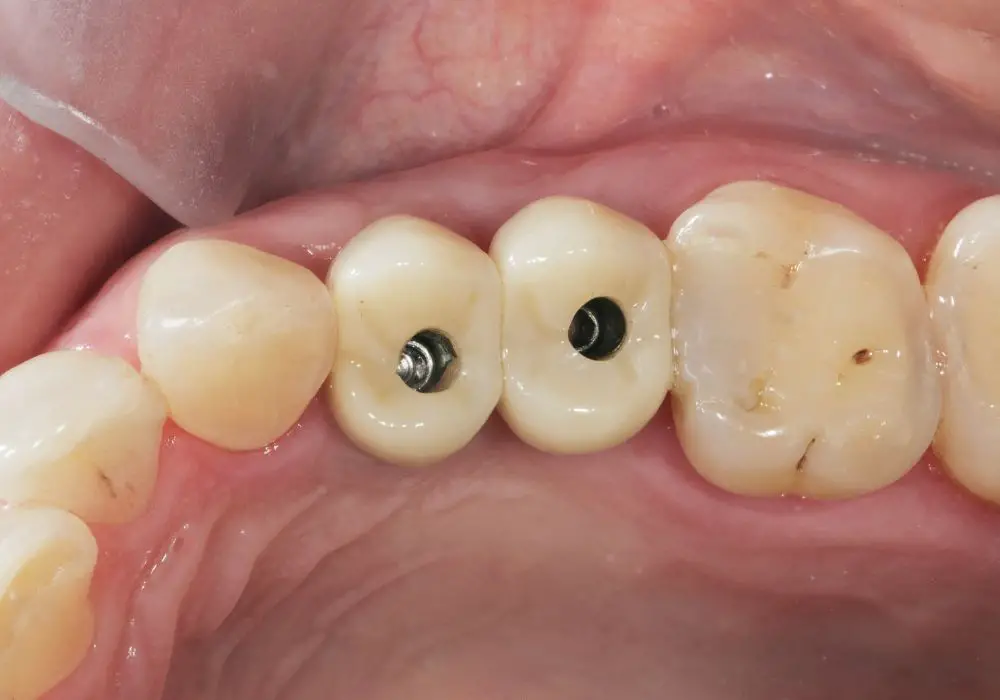
If you’re waiting for your implant, you may want to consider temporary solutions to cover your missing teeth. Here are some options:
Dental Flipper
A dental flipper is a removable partial denture that can be used as a temporary solution to replace missing teeth. It’s made of acrylic and has a wire clasp that attaches to your existing teeth. A dental flipper is a good option if you’re missing one or two teeth and want a temporary solution until your implant is ready. However, it’s not a long-term solution and can be uncomfortable to wear.
Temporary Crown
A temporary crown is a short-term solution to cover a missing tooth while you wait for your permanent crown or implant. It’s made of acrylic and is similar in appearance to your natural teeth. Your dentist will take an impression of your teeth and create a temporary crown that fits over the missing tooth. It’s important to keep the temporary crown clean and avoid eating hard or sticky foods.
Bridge
A bridge is a dental restoration that can be used to replace one or more missing teeth. It’s made of porcelain or ceramic and is attached to your existing teeth. A bridge is a good option if you’re missing one or two teeth and want a semi-permanent solution until your implant is ready. However, it requires healthy teeth on either side of the missing tooth to support the bridge.
Denture
A denture is a removable dental appliance that can be used to replace multiple missing teeth. It’s made of acrylic and is custom-fitted to your mouth. A denture is a good option if you’re missing several teeth and want a temporary solution until your implant is ready. However, it can be uncomfortable to wear and may require adjustments to fit properly.
Overall, there are several temporary solutions available to cover your missing teeth while you wait for your implant. Talk to your dentist to determine which option is best for you.
Removable Partial Dentures
If you’re looking for an affordable and non-invasive way to cover your missing teeth while waiting for the implant, removable partial dentures can be a good option for you.
Removable partial dentures are custom-made devices that replace one or several missing teeth. They are made of acrylic resin and a metal frame, which makes them sturdy and comfortable to wear. The metal frame is designed to fit around your remaining teeth, which helps keep the denture in place.
One of the main benefits of removable partial dentures is that they are removable, which means you can take them out whenever you want. This makes them easy to clean and maintain. However, it’s important to clean them properly to avoid any infections or bad odors. You can use a soft-bristled toothbrush and mild soap to clean them, or you can use a denture cleaner.
Another advantage of removable partial dentures is that they are affordable compared to other options. They are also less invasive than implants or bridges, which means you won’t have to undergo any surgery.
However, there are some drawbacks to removable partial dentures. They may feel uncomfortable at first, and you may need some time to get used to them. They may also affect your speech, and you may need to practice speaking with them. Additionally, they may not look as natural as implants or bridges, and they may not be as durable.
Overall, removable partial dentures can be a good option to cover your missing teeth while waiting for the implant. They are affordable, non-invasive, and easy to clean. However, they may not be as comfortable or natural-looking as other options.
Flipper Tooth
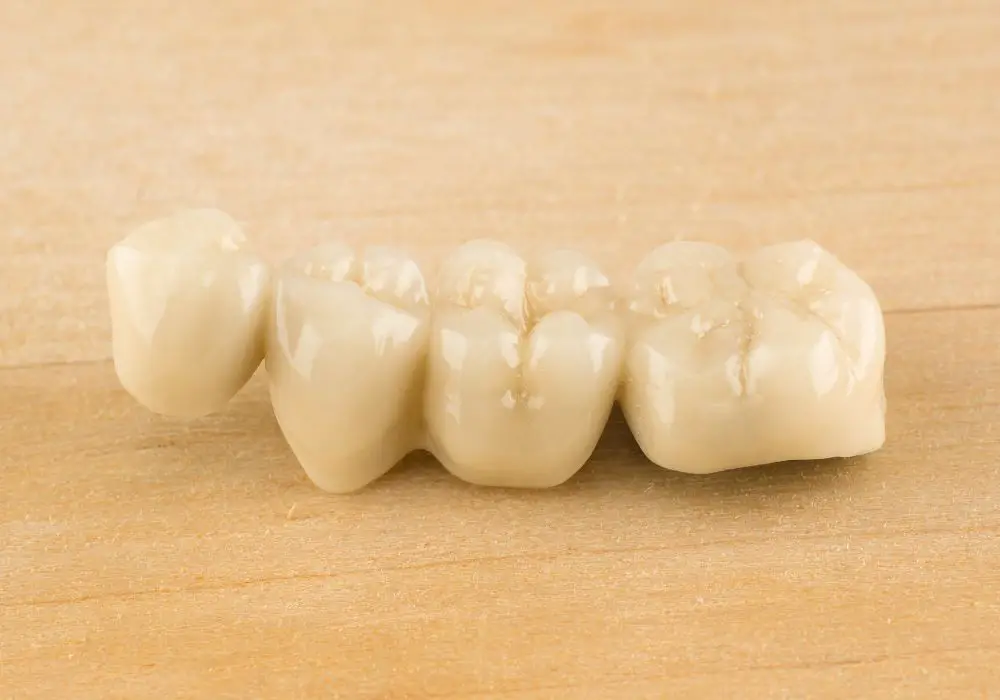
If you’re missing a tooth and waiting for a dental implant, a flipper tooth may be a good temporary solution. A flipper tooth is a removable partial denture that has a false tooth attached to it. It’s a common solution for people who need to cover a gap in their teeth while waiting for a permanent replacement.
Here are some benefits of using a flipper tooth:
- Quick preparation: You won’t have to wait long for your flipper tooth once your dentist takes an impression of your mouth.
- Easy to wear: All you have to do is pop your flipper tooth in and out of your mouth as needed.
- Cost-effective: Flipper teeth are generally less expensive than other temporary tooth replacement options.
- Customizable: Your dentist can make sure your flipper tooth matches the color and shape of your other teeth.
However, there are also some drawbacks to using a flipper tooth:
- Not as durable: Flipper teeth are made from acrylic and are not as durable as other tooth replacement options.
- Can be uncomfortable: Some people find flipper teeth uncomfortable to wear, especially if they’re not properly fitted.
- Requires maintenance: You’ll need to clean your flipper tooth regularly to avoid infections and other dental problems.
Overall, a flipper tooth can be a good temporary solution while you’re waiting for a dental implant. Talk to your dentist to see if it’s the right option for you.
Essix Retainer
If you are missing a tooth and waiting for an implant, an Essix retainer can be a great temporary solution to cover the gap. Essix retainers are clear plastic retainers that fit snugly over your teeth, and they can be customized to include a false tooth to fill in the gap left by your missing tooth.
Essix retainers are a popular choice for many people because they are barely visible and can be easily removed for cleaning. They are also more comfortable to wear than other types of retainers, such as metal retainers.
The cost of an Essix retainer can vary depending on where you live and the complexity of your case. On average, they can cost between £60 and £145 per device, or £120 to £290 per set. While they may not be as durable as other types of retainers, they are still a cost-effective option for covering a missing tooth while waiting for an implant.
It’s important to note that an Essix retainer is not a permanent solution for a missing tooth. It is only meant to be worn temporarily until your implant is ready. Your dentist will provide you with specific instructions on how long you should wear your Essix retainer and how often you should clean it.
Overall, an Essix retainer can be a great option to cover a missing tooth while waiting for an implant. They are comfortable, cost-effective, and barely visible, making them a popular choice for many people.
Dental Bridge
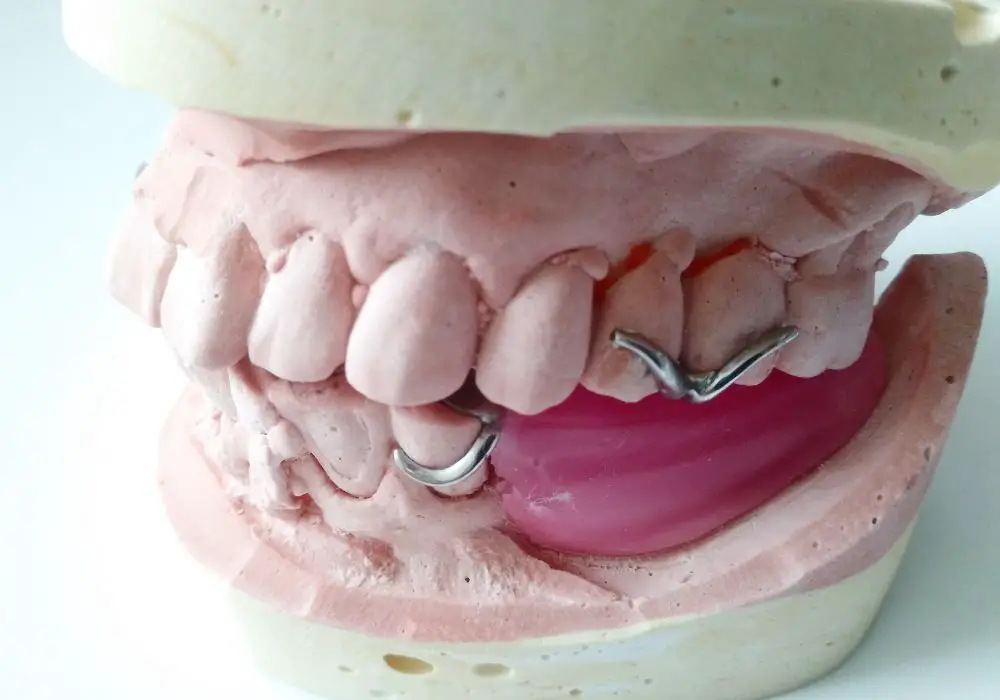
If you have missing teeth and are waiting for an implant, a dental bridge may be a good option for you. A dental bridge is a false tooth (pontic) that is held in place by the teeth on either side of the gap. The anchoring teeth are called abutment teeth, and they are prepared by your dentist to receive the bridge.
There are different types of dental bridges, including traditional, cantilever, Maryland, and implant-supported bridges. Your dentist will recommend the best type of bridge for your specific needs.
One benefit of dental bridges is that they can be used to replace one or more missing teeth. They can also help improve your speech, bite, and overall appearance. Additionally, dental bridges are a more affordable option compared to dental implants.
However, there are some drawbacks to dental bridges. For example, the abutment teeth need to be prepared, which means removing some of the enamel. This can weaken the abutment teeth and make them more susceptible to decay and other dental problems. Additionally, dental bridges may need to be replaced every 5-15 years, depending on the type of bridge and how well you take care of it.
Overall, dental bridges are a good option for covering missing teeth while waiting for an implant. They are affordable and can improve your dental health and appearance. However, it’s important to discuss the benefits and drawbacks with your dentist to determine if a dental bridge is the right choice for you.
Caring for Your Temporary Solution
While waiting for your dental implant, it is important to take proper care of your temporary solution to ensure it lasts until your permanent replacement is ready. Here are some tips for caring for your temporary solution:
Brush and Floss Regularly
Just like your natural teeth, your temporary solution needs regular brushing and flossing to stay clean and healthy. Use a soft-bristled toothbrush and non-abrasive toothpaste to gently brush your temporary solution twice a day. Floss carefully around the edges of your temporary solution to remove any food particles or plaque.
Avoid Hard and Sticky Foods
While wearing your temporary solution, it is important to avoid hard and sticky foods that could damage or dislodge it. Stick to soft foods like soup, yogurt, and mashed potatoes, and avoid chewing gum, caramel, and other sticky treats.
Be Gentle When Chewing
When chewing with your temporary solution, be gentle and avoid biting down too hard. Use your back teeth to chew your food and avoid biting into hard objects like ice or pens.
Keep Your Mouth Clean
To keep your temporary solution clean and healthy, rinse your mouth with salt water or a mouthwash recommended by your dentist. This will help keep your gums and surrounding teeth healthy while you wait for your permanent replacement.
By following these simple tips, you can ensure that your temporary solution stays in good condition until your permanent replacement is ready. Remember to schedule regular check-ups with your dentist to monitor your progress and ensure that your implant procedure goes smoothly.
Preparing for Your Implant Procedure
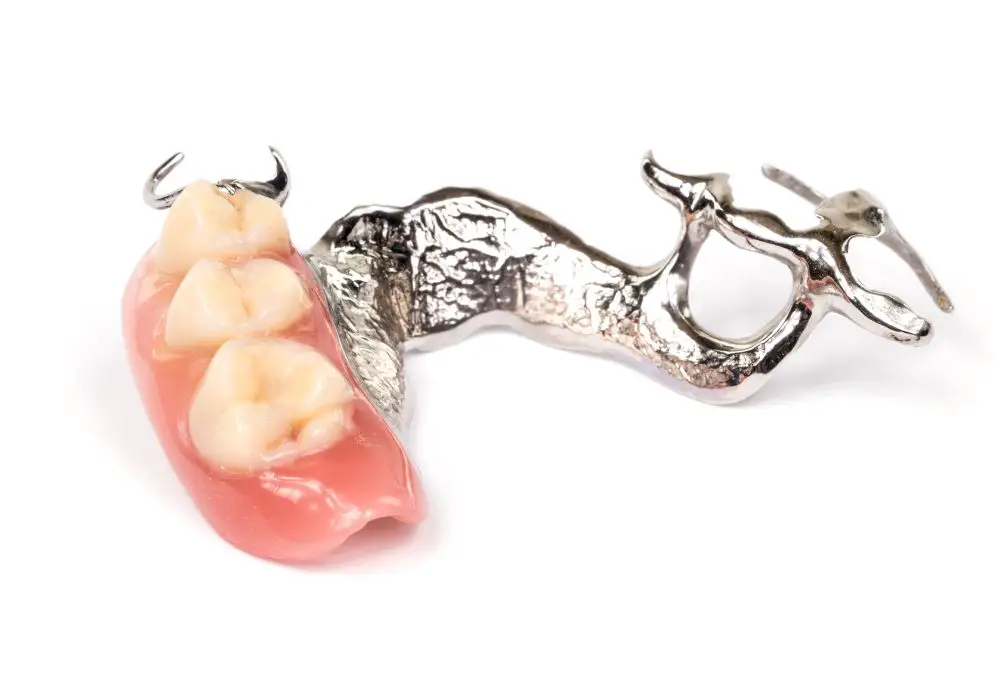
If you have missing teeth and are considering dental implants, it’s important to understand what to expect during the process. While dental implants are an effective solution for missing teeth, the treatment requires multiple steps and several months of healing before you complete the process.
Here are some things you can do to prepare for your implant procedure:
1. Consult with Your Dentist
Before you start the implant process, you should consult with your dentist to determine if you are a good candidate for the procedure. Your dentist will evaluate your oral health and the condition of your jawbone to determine if you have enough bone density to support the implant.
2. Develop a Treatment Plan
Once you’ve been deemed a good candidate for dental implants, your dentist will develop a treatment plan that outlines the steps involved in the process. This plan will include the number of implants you need, the type of implant, and the timeline for the procedure.
3. Prepare for Surgery
Before your implant surgery, you will need to prepare your mouth by brushing and flossing regularly to ensure that your gums are healthy. You may also be asked to avoid eating or drinking for a certain period of time before the surgery.
4. Follow Post-Surgery Instructions
After your implant surgery, it’s important to follow your dentist’s instructions for post-surgery care. This may include taking antibiotics, using a special mouthwash, and avoiding certain foods and activities that could damage the implant.
By following these steps, you can help ensure that your implant procedure is successful and that you have a healthy, functional smile for years to come.
Frequently Asked Questions
What are some temporary tooth replacement options?
If you are waiting for dental implants, your dentist may suggest temporary tooth replacement options to fill the gaps and protect your gums and jawbone. Some of the temporary tooth replacement options include temporary dental crowns, retainers, and bridges.
How can I eat with temporary teeth?
Eating with temporary teeth may take some getting used to, but it is possible. Avoid hard, sticky, or chewy foods that may dislodge the temporary teeth. Instead, opt for softer foods that are easier to chew. Cut your food into small pieces and chew slowly on the opposite side of your mouth.
Can dentures be worn while waiting for implants to heal?
Yes, dentures can be worn while waiting for implants to heal. Dentures are a removable tooth replacement option that can help you eat and speak normally. Your dentist may recommend dentures as a temporary solution until your implants are ready.
What is a temporary dental implant prosthesis?
A temporary dental implant prosthesis is a temporary crown, bridge, or denture that is placed on the implant abutment while your implant heals. The temporary prosthesis is designed to protect the implant and surrounding tissues and to provide you with a temporary tooth replacement option.
How does the all-on-4 dental implant procedure work?
The all-on-4 dental implant procedure is a technique that uses four dental implants to support a full arch of teeth. The implants are strategically placed to provide maximum support and stability for the denture. The all-on-4 procedure can be completed in a single day and can provide you with a temporary tooth replacement option while you wait for your permanent teeth.
How long can I go without teeth while waiting for implants?
The length of time you can go without teeth while waiting for implants depends on your individual case. Your dentist will work with you to determine the best temporary tooth replacement option and timeline for your specific needs. In general, temporary tooth replacement options can be worn for several months while your implants heal.

